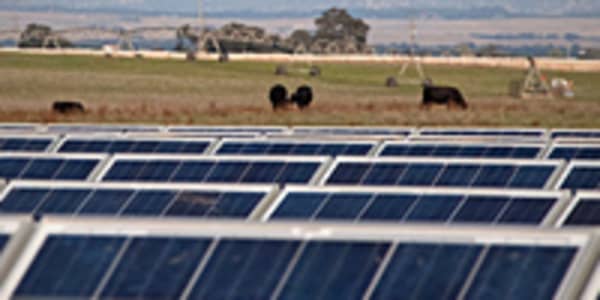As firms grasp the idea that a watt saved is a watt earned, the market in new energy-harvesting technologies could quickly take off.
“An increasing number of consumer and industrial products that need to become disconnected from the electrical outlet will become powered by some form of energy harvesting in the near future,” says Farouk Balouchi, analyst with cleantech research firm, Pike Research.
Energy prices, along with the costs of maintaining batteries for portable devices, “will motivate consumers and industrial end-users to investigate alternatives involving more autonomous power sources,” says Balouchi.
At one time, the only energy-harvesting technology many consumers could identify was a wristwatch that used the wearer’s motion to keep ticking. Now, however, almost any device can be a potential energy source.
“Energy harvesting is the conversion of ambient energy to useable electrical energy,” says Balouchi. “For the most part, we are talking about microwatts to milliwatts, and in some case watts or tens of watts.”
In other words, think of enough energy to power an iPhone, not a coal-fired power plant.
But like hybrid technologies in gas-powered vehicles — such as "regenerative braking" which collects wasted energy from bringing a car to a stop — small savings can add up quickly.
Balouchi points out that electronics using energy-harvesting technologies are “less power hungry,” a great boon to mobile devices or hard-to-reach, inaccessible equipment.
“It provides a cost-effective solution to wired or battery-powered systems,” he says.
Energy harvesting covers a growing basket of technologies that can find and transmit energy that might otherwise be misspent.
Some use mechanical motion to replace electrical switches, like the technologies provided by EnOcean Inc.
While it may not require a lot of power in an electrical switch, replacing one switch in a consumer device could extend the battery charge and life span.
“They use our technology as the secret ingredient in their technologies,” says EnOcean’s chief marketing officer Andreas Schneider of their clients, who can in turn provide their own customers with a product that lasts longer.
Other energy harvesting ideas include capturing lost thermal energy.
Germany-based MicroPelt gathers waste heat from microprocessors — otherwise a problem for the electronics industry —and turns it into useable power for the machine throwing off the heat.
Piezoelectric powered technologies — which gather mechanical energy otherwise lost, such as the shaking of industrial equipment during a full run — are another key energy harvesting group.
UK-based Perpetuum uses this concept to collect power from vibrating train wheels to run sensors that monitor those wheels, allowing more sensors to be deployed in more remote areas.
All of these firms have standout energy harvesting concepts, says Pike’s Balouchi.
Pike estimates that markets for energy harvesting technologies will reach $2.9 billion by 2012, with an estimated 53 million device units of all kinds being shipped worldwide, and $9.5 billion and 235 million shipments by 2015.
But he adds the benefits of energy harvesting applications often go well beyond simple energy savings.
With Perpetuum, for example, additional returns can be measured in earlier maintenance ending costly downtime for trains.
With MicroPelt, equipment will wear out less frequently, and labor and replacement costs are reduced.
Another application of this technology is being used to prevent power outages, estimated by the Lawrence Berkeley National Lab to cost the U.S. economy $80 billion annually.
The Electric Power Research Institute , EPRI, an independent lab for the power industry, is working on a robot that pulls excess power from transmission lines to inspect, maintain and even possibly repair those same lines.
Nicknamed “Ti,” the robot’s prototype is being tested at the agency’s Lenox, Mass., facility, says Andrew Phillips, EPRI’s director of transmission and substation research.
“Our [power] infrastructure is getting older and older and older,” says Phillips of the nation's 200,000 miles of power lines. “We need to inspect it in more and more detail.”
Enter Ti, which pulls power as well as from the power lines it moves along at 3 mph, as well as from small solar panels it has on-board — another form of energy harvesting, says Phillips.
“You really have to do it from a helicopter,” he says of inspections today, noting the cost and time requirements.
Even existing sensor technology can take several people to clip and unclip them from power lines, not to mention the issues of miles of inaccessible lines.
With Ti’s deployment in 2013, shorts that cause blackouts can be identified quickly, with more accuracy, says Phillips.
With energy prices stubbornly high, and with customers wanting smoother operating equipment with longer lives, the future looks bright for energy-harvesting firms.
“The adoption of energy harvesting technologies is being driven by both convenience and economic factors,” says Pike's president Clint Wheelock.
As capabilities and costs improve, he adds, “energy harvesting will be an increasingly attractive alternative for a wide range of consumer and industrial applications.”




